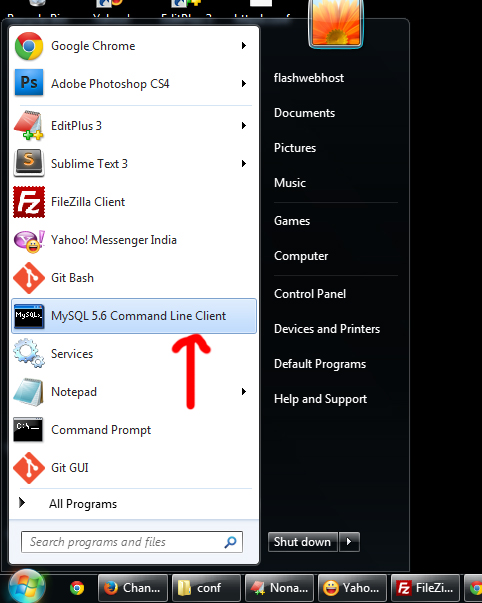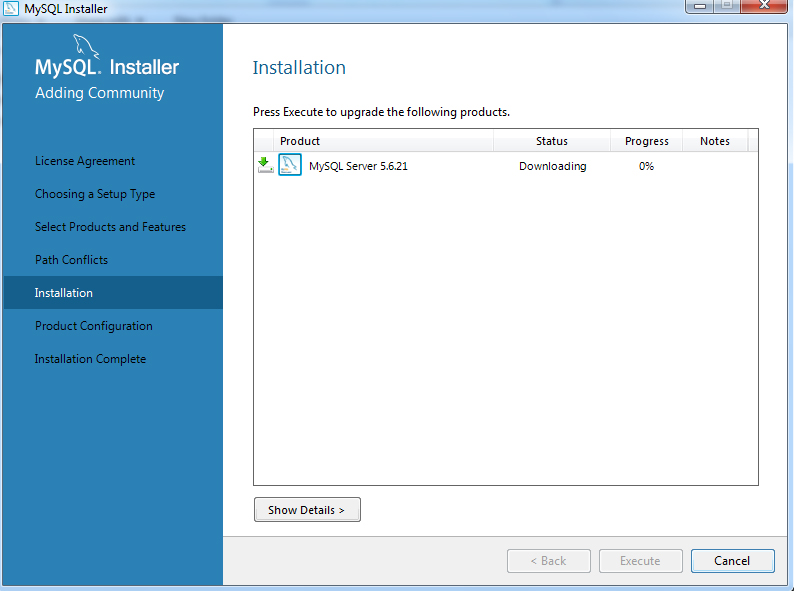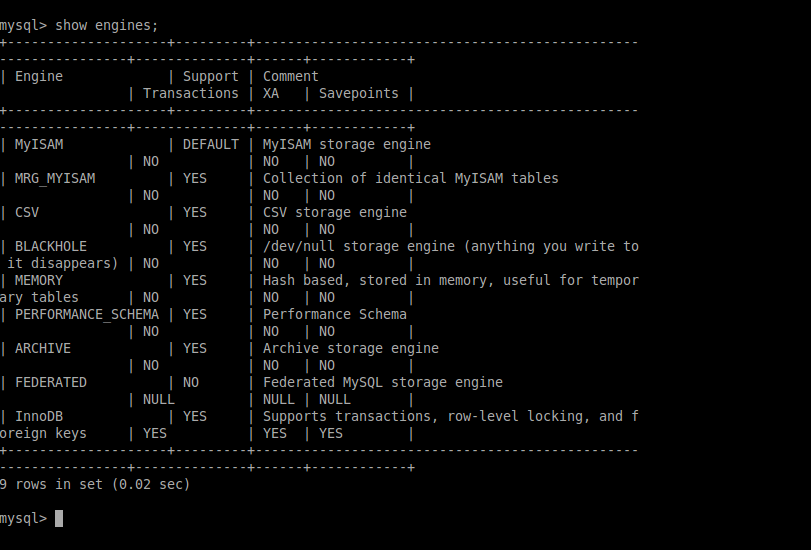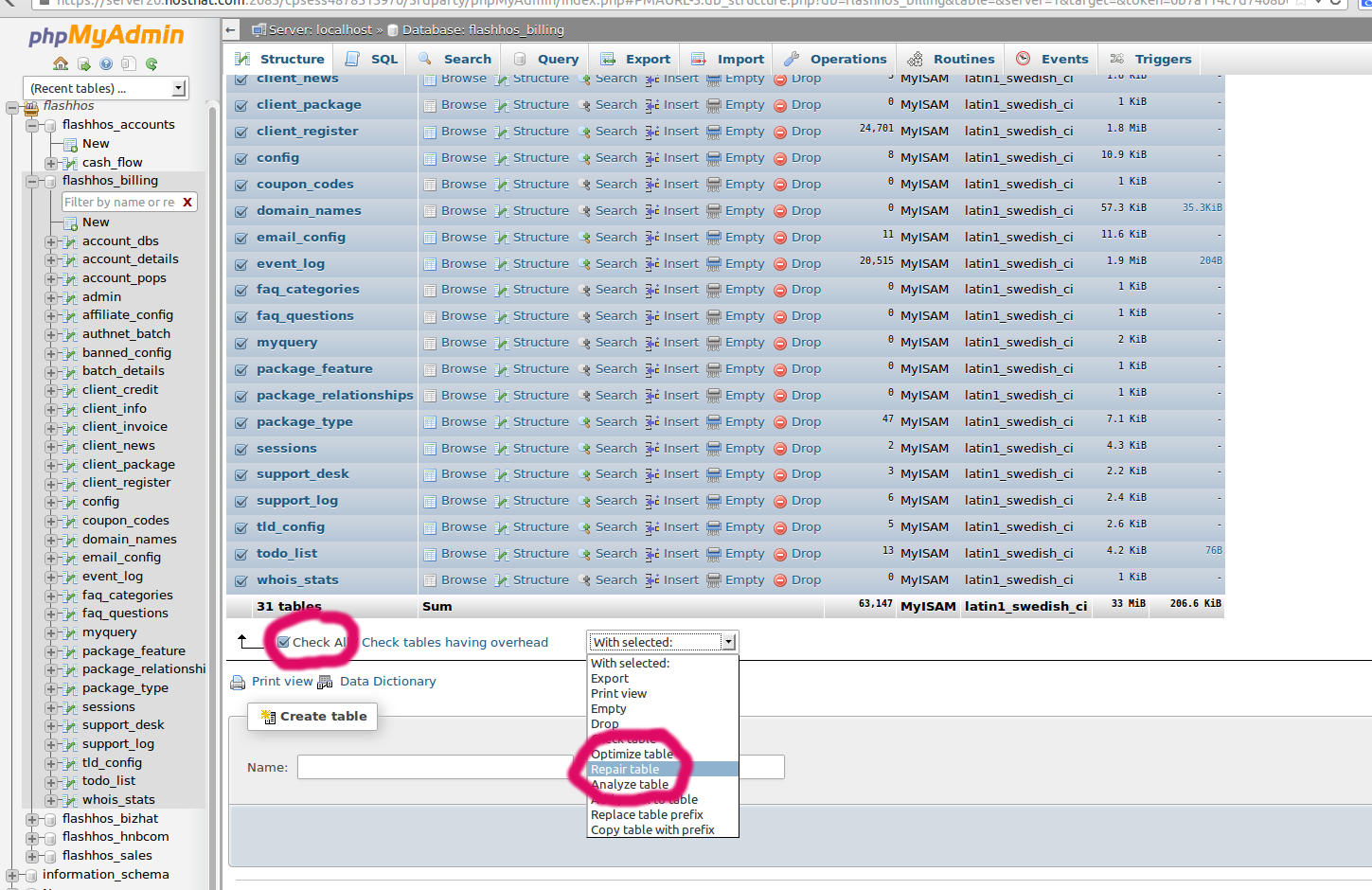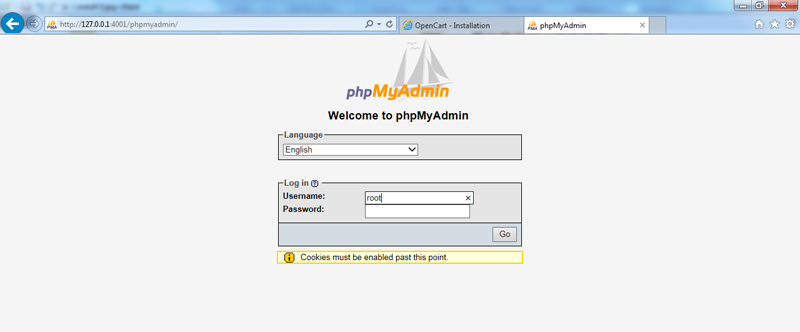Category Archives: MySQL
Install Percona Server (MySQL)
First we need to add Percona yum repo. This can be done by installing rpm provided by Percona. To see all available Percona Server versions, use yum search To install Percona Server 5.6 (latest version), run After installing, run This
This table does not contain a unique column. Grid edit, checkbox, Edit, Copy and Delete features are not available
After trying to install one of the classified script, i tried to login to admin area with default login details. But it showing ‘Invalid username/password. Login failed’ So I went into cPanel and opened phpmyadmin to reset the password and
How to install Apache MySQL and PHP on Cent OS 6.6
Following tutorial describes how to install Apache MySQL and PHP on a Cent OS based server. First we need to identify the version of OS using on the server. For that, login to the server as root user and run
How to change MYSQL root password in windows 7
In my last post, i shared my experience with installing MYSQL in windows 7. During the installation I set ‘root’ as MYSQL password. Now I want to change the same to ‘hostonnet’ I followed the instructions at MYSQL Documentation http://dev.mysql.com/doc/refman/5.0/en/resetting-permissions.html
How to install MySQL and move to new drive in Windows 7
Well today I tried to install MySQL on my computer (Windows 7 Ultimate,32 bit operating system.) by using the below instructions. 1. Download the MSI Installer from http://dev.mysql.com/downloads/windows/installer/5.6.html 2 . Run the MySQL installer executable file that you had downloaded.
How to deactivate WordPress Plugins using PHPMyAdmin
We can deactivate a plugin through WP Admin Dashboard. What we can do if we can’t accessing the admin area ? Yes, The following situations may block you out from accessing the dashboard 1). Will show a blank page after
Speed Up Your Web Site With MySQL Query Caching
To speed up query, enable the MySQL query cache, before that you need to set few variables in mysql configuration file ( my.cnf or my.ini) The first you make sure that your installation of MySQL actually has query caching support
InnoDB gets disabled
InnoDB is a MySQL engine which stores all of the data for it’s tables within the ibdata files located at /var/lib/mysql on the server. Unfortunately, data can be corrupted within these files and recovery methods must be taken to restore
How to Check and Repair a Database
How to check your tables 1, Log into your cPanel Control panel 2, Click the phpMyAdmin icon 3, Choose the database you are working with by clicking on it in the left menu 4, On the right side of the
How to Back Up and Restore a MySQL Database using PHPMyAdmin
1, Open phpMyAdmin. 2, Select your database by clicking the database name in the list on the left of the screen. 3, Click the “Export” link. This should bring up a new screen that says View dump of database 4,




